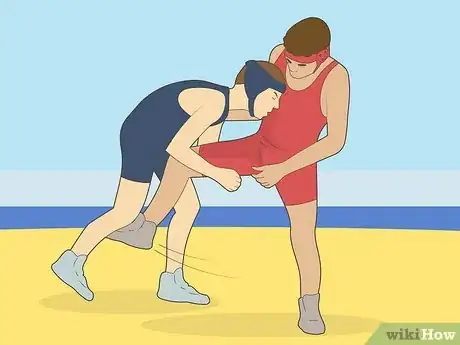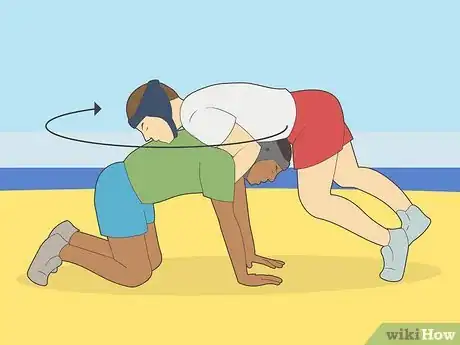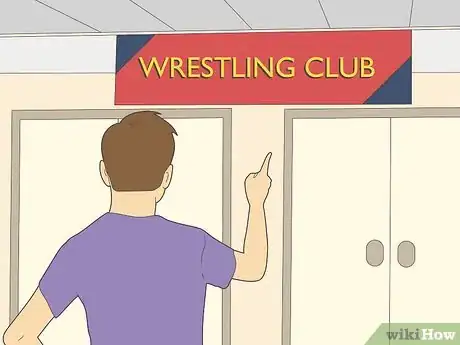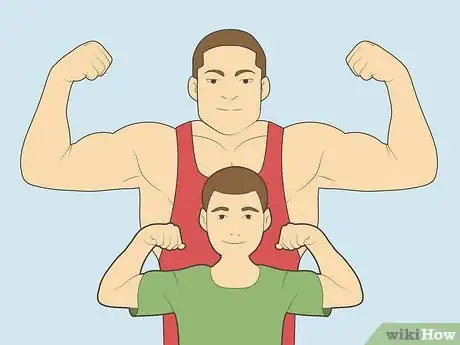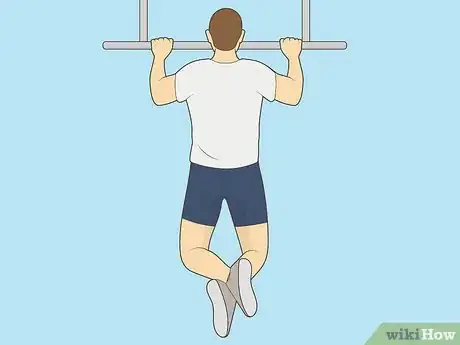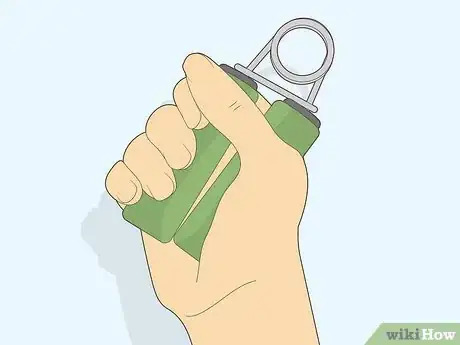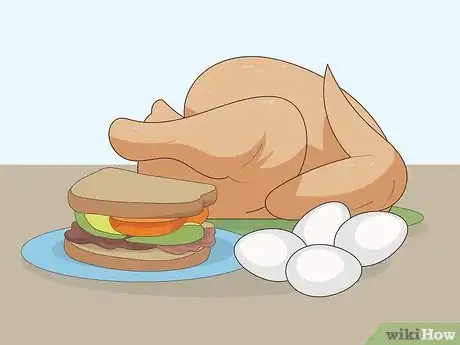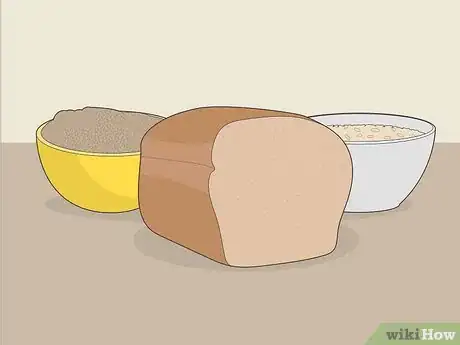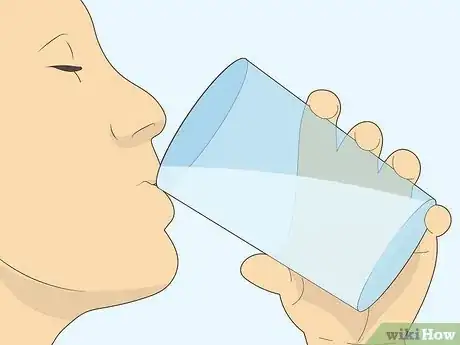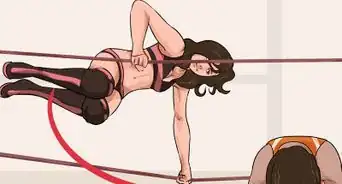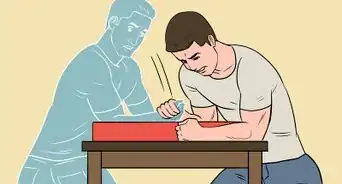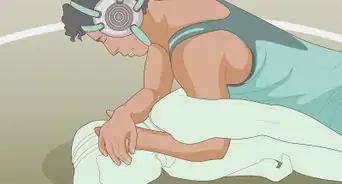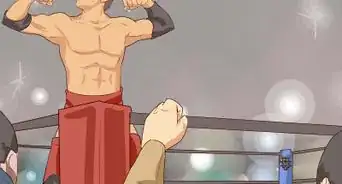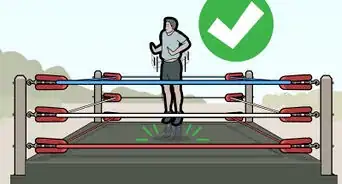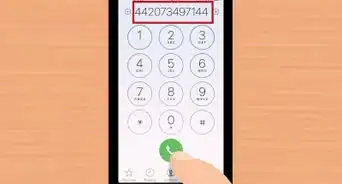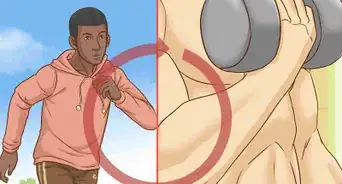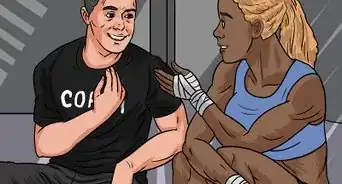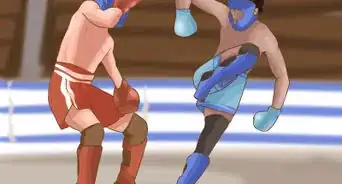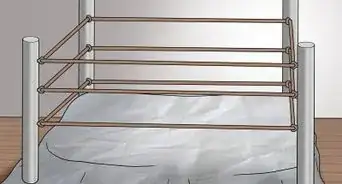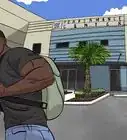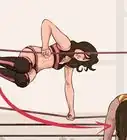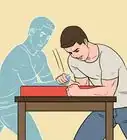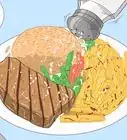This article was co-authored by wikiHow Staff. Our trained team of editors and researchers validate articles for accuracy and comprehensiveness. wikiHow's Content Management Team carefully monitors the work from our editorial staff to ensure that each article is backed by trusted research and meets our high quality standards.
There are 15 references cited in this article, which can be found at the bottom of the page.
wikiHow marks an article as reader-approved once it receives enough positive feedback. In this case, 94% of readers who voted found the article helpful, earning it our reader-approved status.
This article has been viewed 91,260 times.
Learn more...
Wrestling is a very popular sport in the United States and one that has a huge professional following. Many kids want to grow up to become professional wrestlers, but few put in the work to actually make their dream a reality. Wrestlers are some of the most disciplined and hard-working athletes out there, and to become a professional, you’ll need to tap into those qualities yourself.
Steps
Learning How to Wrestle
-
1Learn some basic offensive moves. Two of the moves young wrestlers learn first are the single-leg takedown and the double-leg takedown.[1] To do the single-leg takedown, grab one of your opponent’s legs and use your position to force them to the ground. In a double-leg takedown, grab both legs at the same time.
- The most important thing is not how many moves you know, but that you’re comfortable in the basic positions and that you go into your matches with an idea of what positions you’re going to use.
- Don’t focus on learning all the moves at once. Instead, focus on learning one or two and getting as good at them as you can be.
-
2Run spin drills. To do this, you will need a partner. Have your partner kneel on the floor with their palms facedown so their body looks like a tabletop. Hook one of your arms underneath your partner’s armpits. Rotate your body by leaning onto your partner's back and spinning your lower body like a top. When you reach your opponent's other side, hook your arms into their other armpit, then immediately turn around and come back the other way.[2]
- After you’ve run this drill for a while, switch places so that you become the base and run the drill again.
- Try to run this drill for 15 minutes every day.
Advertisement -
3Find a team. A popular option for children under the age of ten is to start in a freestyle/Greco-Roman wrestling club. This is a great option, because these clubs utilize folkstyle, which is the style of wrestling that is practiced in high schools and colleges in the United States. Training in folkstyle will give you a nice head start if you’re looking to compete later on in your academic career.
- Select a team that focuses more on fitness and technicality, rather than competition. When training at a young age, fundamentals are more important than winning tournaments.
-
4Invest in the appropriate gear. In order to wrestle safely, you will need to secure the following equipment. All of the following equipment can be bought at a sporting goods store, or found in your own home.
- Wrestling shoes
- Headgear
- Loose fitting clothing that doesn’t have any buttons, jewelry, zippers or metal.
-
5Work hard and follow the path to becoming a pro wrestler. Becoming a pro-wrestler is a path that can take decades. Most pro-wrestlers spent years honing their skills on the mat. Once you join a team, compete in elementary school and go out for your middle school and high school teams. Look for a college with a strong wrestling program or skip college and get trained by a wrestling school in your area.[3]
- Branch out into other sports to become the most well rounded athlete you can possibly be.
- Try to work with people who have connections in the industry, so they can help you secure an agent. Getting signed is very important in order to be recruited as a professional. Be kind and work hard so people want to work with you.
- Do not become discouraged by your setbacks. Losing matches is part of competing. The more matches you lose, the more you’ll appreciate the ones you win.
Training Your Body
-
1Introduce strength training into your workout routine. Strength training is what most wrestlers use to improve their physical strength and power. There are differing opinions over when the appropriate age is to start strength training, but certain exercises can be done at any state of physical development.[4] Some exercises that are appropriate for children as young as elementary school include:
- Kettle bell swings –Stand with your feet hip-width apart. Squat down, and grip your kettle bell with palms facing you and thumbs wrapped around the handle. Stand up and swing the kettle bell to chest height. Bring the kettle bell back down between your knees and repeat.[5] Swing from your hips and legs to avoid hurting your back. For more information, go here.
- Battle ropes – to do these, you’ll need a set of battle ropes. Grip the rope handle in your hands and make waves with the rope, as fast as possible. Try to do two sets of one minute each.[6]
- Pull ups
- Push ups
- Dips
- Tumbling
- Squats
-
2Work on your grip strength. Grip strength is important because it allows you to maintain control over your opponents.[7] Good exercises for grip strength include hanging onto the chin-up bar, rope climbing using only your arms and wrist rolls.[8]
- To do wrist rolls, you will need a wrist roller. A wrist roller is a stick attached to a weight by a length of rope. To do a wrist roll, grip your wrist roller in both hands and lift your arms until they are fully extended in front of you. Rotate one wrist at a time towards your body, so that the stick rolls the weight up towards your face.[9]
- Once the weight has reached the bar, rotate your wrists the other way to roll the weight back towards the floor.
-
3Work on your speed. Speed is an incredibly important attribute in wrestling, so you’ll want to work on getting as fast as you can.[10] To improve your quickness, try incorporating the following exercises into your workout routine:
- Jumping rope
- Ladder drills – to do this, set up a ladder lying face-down in your back yard. Run through the ladder, making sure to step into the center of every rung. Focus on swinging your arms and lifting your knees high.[11]
- Shadow wrestling – this is a great option if you don’t have a partner. Visualize that you’re in a fight and execute the moves that you would make. Try to make the movements as realistic as you would if you were in a real wrestling match.[12]
- Line Hops – To do this, lay two jump ropes on the ground, side by side (they should be about two feet apart.) Push off one of your feet and hop to the outside of the other line. Hop back and forth between the two lines until you’ve reached the end. Try to do thirty line hops in a row. [13]
Focusing on Nutrition
-
1Increase your protein levels. Most children (especially child athletes) are only getting 25% of the protein their bodies actually need. To increase your protein levels, try eating two eggs for breakfast, a peanut butter and jelly or turkey sandwich for lunch and chicken for dinner.
- When you snack, snack on cheeses or yogurts as these are also high in protein.
-
2Eat foods that are high in carbs. Carbs come in two forms: simple and complex. You’ll want to focus on eating complex carbs. To do this, add more breads, grains and cereals to your diet.[14]
- Try to cut back on simple carbs. Some simple carbs, like fruit, are good, but soda and cookies are not. If you need some sugar, eat an apple or a banana.
-
3Control your water intake. Most wrestlers have to gain and drop weight in a very short amount of time in order to make weight. Learning how to control your water is one easy way to lose or gain weight in a quick period of time. In order to control your water effectively, follow these steps:
- Drink one gallon of water per day.
- Two days before you’re scheduled to weigh in, drink 50% less water.
- One day before you weigh in, drink 25% less water.
- On your weigh in day, do not drink water until after you have weighed in.
Community Q&A
-
QuestionCan I wrestle at any age?
 Community AnswerAs long as you have no medical issues, you can wrestle at any age. A good age to start is between six and 13.
Community AnswerAs long as you have no medical issues, you can wrestle at any age. A good age to start is between six and 13. -
QuestionCan I be a WWE wrestler at the age of 10?
 Community AnswerNo, you cannot be a WWE wrestler at the age of 10. That being said, you're definitely old enough to begin wrestling and training to eventually become a WWE wrestler. You should consider joining a local wrestling league for kids.
Community AnswerNo, you cannot be a WWE wrestler at the age of 10. That being said, you're definitely old enough to begin wrestling and training to eventually become a WWE wrestler. You should consider joining a local wrestling league for kids. -
QuestionHow do I become a WWE star from another country?
 Community AnswerTrain yourself in your country. Superstars don't need to be of any particular country. After your training, try wrestling in your country's promotions. If you're good enough to attract WWE's attention, you would be selected in NXT or other training circuits for new recruits. If you haven't been recognized, then move to USA and try wrestling in promotions there. You need to be very passionate if you really want to be a WWE superstar, because it isn't easy. It would take years of wrestling before you can step into WWE. It took 14 years for Kevin Owens to step into WWE and 18 for Samoa Joe. But, there are wrestlers who have been selected at a very young age.
Community AnswerTrain yourself in your country. Superstars don't need to be of any particular country. After your training, try wrestling in your country's promotions. If you're good enough to attract WWE's attention, you would be selected in NXT or other training circuits for new recruits. If you haven't been recognized, then move to USA and try wrestling in promotions there. You need to be very passionate if you really want to be a WWE superstar, because it isn't easy. It would take years of wrestling before you can step into WWE. It took 14 years for Kevin Owens to step into WWE and 18 for Samoa Joe. But, there are wrestlers who have been selected at a very young age.
Warnings
- Do your own research. A lot of information about diet and exercise for wrestlers is based on myth and folklore, so educate yourself about the best ways to feed and train your body.⧼thumbs_response⧽
Things You'll Need
- Wrestling shoes
- Headgear
- Loose fitting clothing that doesn’t have any buttons, jewelry, zippers or metal.
References
- ↑ http://www.playsportstv.com/wrestling/articles/1386/how-to-wrestle_getting-beginners-comfortable
- ↑ http://www.playsportstv.com/wrestling/wrestling-drills_conditioning-spin-drill
- ↑ https://www.collegerecruiter.com/blog/2014/08/19/want-pro-wrestler-heres-start-career-professional-wrestling/
- ↑ https://www.teamusa.org/USA-Wrestling/Features/2014/May/28/Proper-Strength-Training-for-Wrestlers
- ↑ http://greatist.com/move/how-to-do-the-perfect-kettlebell-swing
- ↑ http://www.fitnessmagazine.com/workout/express/20-minute/battle-ropes/?page=1
- ↑ http://www.bodybuilding.com/fun/get-a-grip-the-importance-of-forearm-strength.html
- ↑ http://sectiononewrestling.com/documents/strength_training_kids_preteens_adolescents.html
- ↑ http://www.bodybuilding.com/exercises/detail/view/name/wrist-roller
- ↑ http://healthyliving.azcentral.com/speed-workouts-collegiate-wrestling-17670.html
- ↑ http://www.brianmac.co.uk/agility.htm
- ↑ https://www.youtube.com/watch?v=c5ODod6X7ac
- ↑ http://www.realjock.com/article/566
- ↑ https://www.iahsaa.org/Sports_Medicine_Wellness/Nutrition/Wrestling_Nutrition_Ideas_Booklet.pdf
- ↑ https://wrestlingtips101.wordpress.com/category/wrestling-tips-for-beginners/
About This Article
If you want to train to be a pro wrestler, start by learning the single-leg takedown and double-leg takedown, which are two of the most basic offensive moves. Then, practice spin drills by asking a friend to kneel on the floor in a tabletop position, hooking your arm underneath his armpit, leaning into his back, and rotating your lower body like a top to reach your friend’s other side. Working on these wrestling moves is important, but so is strength training, so incorporate pull-ups, push-ups, dips, squats, and kettle bell swings into your daily workout. Finally, make sure you are getting the right nutrients by loading up on foods that are high in carbs and proteins. To learn more, including how to improve your speed, keep reading!
